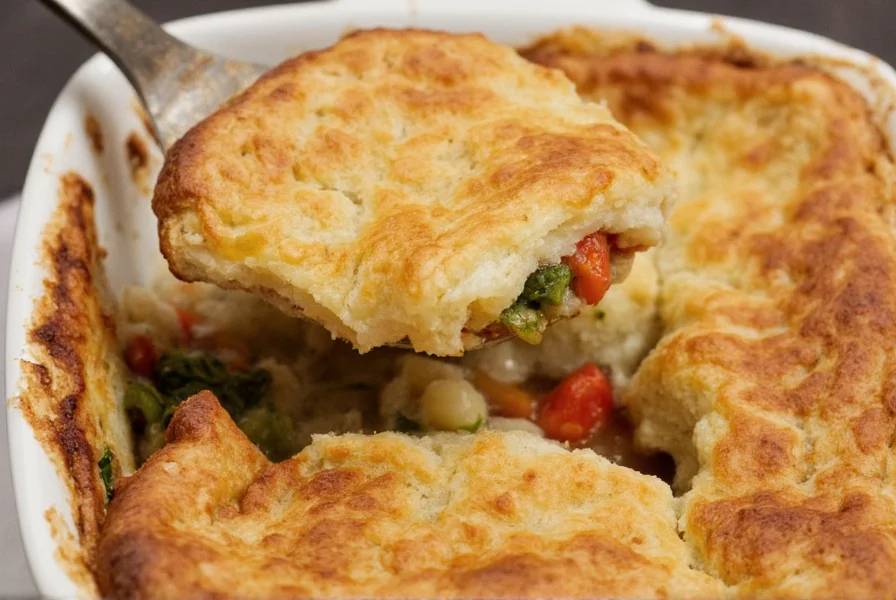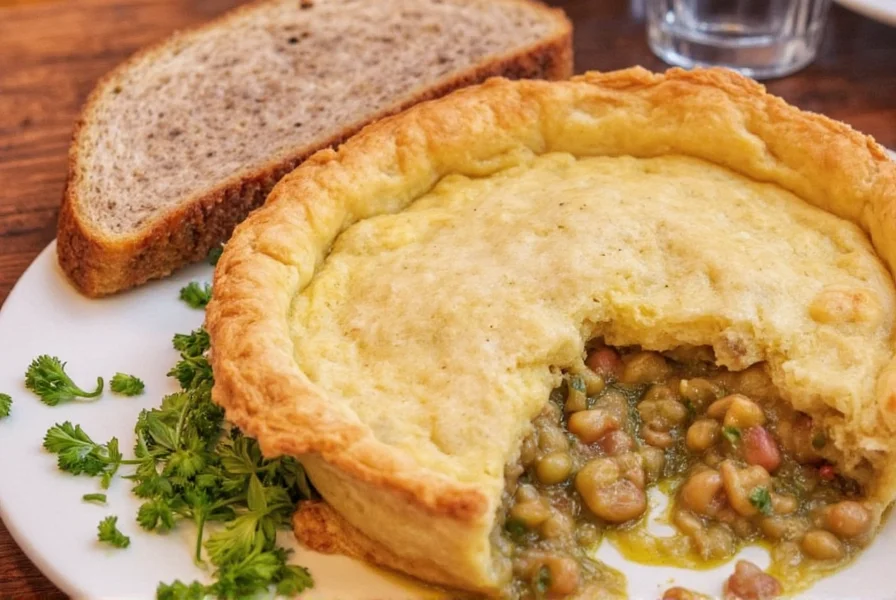Table of Contents
Introduction
The Pennsylvania Dutch pot pie is a beloved regional specialty known for its rich, savory filling and flaky crust. This authentic recipe delivers traditional flavors with clear, actionable instructions for home cooks. Unlike generic pot pies, this version uses specific spice combinations and techniques passed down through generations of Pennsylvania Dutch families.
Ingredients
For the Crust:
- 2 1/2 cups all-purpose flour
- 1 tsp salt
- 1 cup (2 sticks) unsalted butter, cold and cubed
- 6-8 tbsp ice water
For the Filling:
- 2 cups cooked chicken, diced (or substitute with beef or vegetarian options)
- 1 cup carrots, diced
- 1 cup potatoes, diced
- 1/2 cup onions, chopped
- 1/2 cup celery, diced
- 2 tbsp butter
- 2 tbsp all-purpose flour
- 2 cups chicken broth (or vegetable broth for vegetarian version)
- 1 tsp salt
- 1/2 tsp black pepper
- 1 tsp smoked paprika
- 1/2 tsp dried oregano
- 1/4 tsp ground cumin (optional for depth)
- 1 tbsp fresh dill, chopped
Step-by-Step Instructions
Prepare the Crust:
- In a large bowl, whisk together flour and salt. Cut cold butter into the flour using a pastry cutter until mixture resembles coarse crumbs.
- Add ice water 1 tablespoon at a time, mixing until dough just comes together. Divide into two portions, wrap in plastic, and chill for 30 minutes.
Make the Filling:
- Melt 2 tbsp butter in a skillet over medium heat. Add onions, carrots, and celery; sauté until tender (5-7 minutes).
- Stir in 2 tbsp flour to form a roux, then gradually add broth while whisking to prevent lumps.
- Bring to a simmer until thickened (3-4 minutes). Remove from heat and stir in chicken, salt, pepper, paprika, oregano, cumin (if using), and dill.
Assemble and Bake:
- Preheat oven to 375°F (190°C). Roll out one dough portion to fit a 9-inch pie dish. Place in dish.
- Pour filling into crust. Roll out second dough portion for top crust, place over filling, and seal edges. Cut 4-5 steam vents.
- Bake for 45-50 minutes until crust is golden brown and filling is bubbling. Let cool 15 minutes before serving.
| Spice | Flavor Role | Key Tip |
|---|---|---|
| Smoked Paprika | Warm, smoky depth | Use for authentic Pennsylvania Dutch flavor profile |
| Dill | Fresh, bright finish | Add fresh at the end for maximum aroma |
| Oregano | Earthy herbal base | Dried works best for concentrated flavor |

Key Tips for Success
- Keep ingredients cold: Chill dough and butter thoroughly for a flaky crust.
- Thicken properly: Simmer filling until it coats the back of a spoon to prevent sogginess.
- Don’t overfill: Leave 1/2 inch space between filling and crust edge.
- Use fresh spices: Replace spices every 6 months for optimal flavor potency.
Frequently Asked Questions
What makes Pa Dutch pot pie different from regular pot pie?
Traditional Pennsylvania Dutch pot pie uses a specific spice blend (smoked paprika, dill, oregano) and often features a "slippery" dumpling-style topping instead of a full top crust. The filling is also typically thicker and less gravy-based than standard pot pies.
Can I make a vegetarian version?
Absolutely. Substitute chicken with 2 cups of white beans or lentils, use vegetable broth, and add 1 tbsp soy sauce for umami. The spice profile remains the same for authentic flavor.
How do I prevent a soggy crust?
1) Thicken filling properly before adding to crust; 2) Pre-bake bottom crust for 5 minutes; 3) Use a glass pie dish for even heat distribution; 4) Let pie rest 15 minutes after baking before slicing.
What’s the best way to store leftovers?
Cover tightly and refrigerate for up to 4 days. Reheat in 350°F (175°C) oven for 15-20 minutes to maintain crust crispness. Freezing is not recommended as the crust texture deteriorates.
Conclusion
This authentic Pa Dutch pot pie recipe captures generations of Pennsylvania Dutch culinary tradition. By focusing on precise spice measurements, proper filling consistency, and crust technique, you’ll create a dish that’s both comforting and deeply flavorful. Remember: quality ingredients and attention to detail make all the difference in this regional specialty.











 浙公网安备
33010002000092号
浙公网安备
33010002000092号 浙B2-20120091-4
浙B2-20120091-4